Heroes of the Last Age
When the Elder Ones were awakened and the Old Empire fell, the people were left to fend for themselves. Some heroes rose to combat the darkness, but eventually they all fell. That is, until seven mysterious warriors came out of the East, hailing from a strange and distant land. As they pushed west into the Old Empire, they taught the refugees many things. They fought bravely, and along the way gained many supporters, which strengthened the heroes in their cause. After many years of battle, the seven eventually proved victorious. Once the Elder Ones were sealed away, their fell beasts became weak and crumbled to dust. To this day, the seven heroes are still revered, and worshiped as gods in the Three Kingdoms region.
Bejeka(Beh-jeck-ah) – Male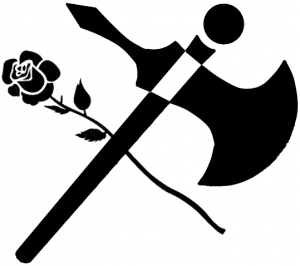
Bejeka, the warlord god, is Neutral Evil. His other titles include the Oppressor and the Destroyer. He is a tyrannical leader who will put to waste all who oppose him. Evil Fighters and Monks tend to revere him, but Barbarians appreciate the raw strength that he represents. The domains associated with him are Destruction, Competition, Evil, Fire, Pestilence, Strength, and War. His favored weapon is the greataxe.
Bejekist Churches
Due to the nature of most of his followers, there does not tend to be many organizations devoted to Bejeka. Most of his groups are cult-like and dissolve or are broken up (from within as often as much from other forces) almost as fast as they form. One, however, has proven to be subversive enough to have stood the test of time.
- Death Knights – Evil, ruthless, envious, and hungry for power; the hallmarks of a Death Knight. Though often solitary, they sometimes act in small groups, spreading death and terror in their wake.
Hierarchy: Since few have successfully infiltrated the ranks of the Death Knights and lived to report on their inner workings, not much is known about their rights and rituals. However, with what little evidence that has been gathered, it appears that the Death Knights are a cell-based organization.
Fatame(Fa-ta-meh) – Female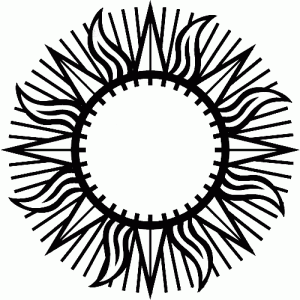
Fatame, the goddess of compassion, is Neutral Good. She is the patron saint of Maldova, and referred to as the Lady of the Valley, the Virgin, or even at times the Provider. She is caring and compassionate, watching over all that is good, willing to help those in need, no matter their alignment. She is sometimes associated with bountiful harvests. Fatame claims the most followers, including all of Maldova, where the ruling theocracy has established a state religion following her teachings. Fatame is associated with the Community, Earth, Good, Healing, Plant, Protection, and Sun domains. Her favored weapon is the unarmed strike.
Fatameist Churches
Fatame’s followers are wide and varied, as are their views on how best to serve her. Most tend to try to think as she would, and will tend to agree to disagree rather than fracture. Some, however, are a bit more driven, and have created separate organizations to serve her.
- Church of the Benevolent Light – Through the ages, there have been several rulers that were Fatameists. However, when the Priestesses of the Temple of the Shining Valley assumed control in Maldova, many felt uncomfortable swearing fealty to a foreign government. Many sects with similar missions were formed, and as nations rose and fell, the sects would combine. Eventually, around the end of the Vaerendri Wars, so few sects remained that their leading priests and priestesses decided to meet in Grenscross. The result of the enclave was the forming of a church, the Church of the Benevolent Light. Those in the service of the church are quite accepting, community oriented, and typically shun any forms of violence. Most clerics of this church use the Cloistered Cleric variant presented in Unearthed Arcana (p.50), though they may also be a standard Cleric as presented in the Player’s Handbook. Monks that serve in a Benevolent Light monastery must use one of the following variant fighting styles presented in Unearthed Arcana (p.52): Denying Stance, Passive Way, or Undying Way. Monks serving this church may multiclass freely with the Healer class from the Miniatures Handbook, though they must maintain more levels in Monk than Healer.
Hierarchy: The Bishops that make up the Council of Saints guide the church. Arch-priests and -priestesses are the heads of each individual temple or monastery. Priests and Priestesses are encouraged to be missionaries or wandering priests, though they may also elect to cloister in monasteries if they so wish. Acolytes, members wishing to join the clergy, tend to assist in services at temples.
- Temple of the Shining Valley – The ruling theocracy in Maldova are the High Priestesses of the Temple of the Valley, headquartered in Leauclaire. They believe themselves to be more orthodox Fatemeists. Like the Benevolents, they are also accepting of others, community oriented, and abstain from violence. However, unlike the Benevolents, they also shun arcane magic. Most clerics of this church use the Cloistered Cleric variant presented in Unearthed Arcana (p.50), though they may also be a standard Cleric as presented in the Player’s Handbook. Monks that serve in a Shining Valley monastery must use one of the following variant fighting styles presented in Unearthed Arcana (p.52): Denying Stance, Passive Way, or Undying Way.
Hierarchy: The Holy Mother, the most senior of the High Priestesses, not only leads the church, but she is also the supreme ruler of Maldova. The rest of the High Priestesses, collectively called the Circle of the Faithful, double as governors of provinces. Priests and Priestesses are the heads of individual temples, and also act as mayors or city council members, depending on th size and number of temples in a particular community. Missionaries, evangelists and wandering or cloistered clergy are referred to as Rectors. Prospective clergy and seminarians are called Pilgrims.
- Temple Knights – The Temple Knights are the defenders of the High Priestesses of the Valley, and are a subset of the Temple of the Shining Valley. They do not abstain from combat in order to defend their charges, though they do try to uphold other tenants of the church. As a martial order of the ruling theocracy, they are also responsible for the keeping the order for individual communities and protect the borders of Maldova.
Hierarchy: The Lord Templar is the personal protector of the Holy Mother, and is the commander-in-chief of the military of Maldova. High Templars shadow the other High Priestesses, and field the armies as generals. Templars keep the order in individual communities as guard captains and protect the temples in their charge.
- Order of the Bountiful Hand – Few monks are Fatameists, and most who are usually serve at Benevolent or Valley monasteries. The monks of the Bountiful Hand feel that they can serve best if further removed from society, so they can contemplate the intricacies of Fatame’s teachings. Monks that serve in a Bountiful Hand monastery must use one of the following variant fighting styles presented in Unearthed Arcana (p.52): Denying Stance, Hand and Foot, Passive Way, or Undying Way. Monks serving this order may multiclass freely with the Healer class from the Miniatures Handbook, though they must maintain more levels in Monk than Healer.
Hierarchy: Each monastery is autonomous and communal in nature, with no formal hierarchy. Most, however, defer to the wisdom of elder members. All at the commune refer to each other as Brother or Sister regardless of length of membership.
Iriomena(Erie-oh-men-ah) – Male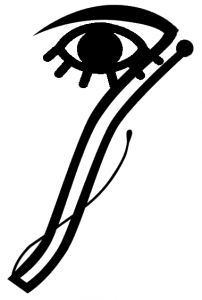
The god of magic, Iriomena, is Neutral. He is also called the Omniscient, the Mad, or the Reaper. His followers, which tend to be arcane casters of all types, believe that through his madness lies true knowledge. He also is believed to be residing between the world of the living and the dead, guiding souls to their proper resting place. His domains include Death, Destruction, Knowledge, Madness, Magic, Oracle and Void. His favored weapon is the scythe.
Iriomenan Churches
Though much is known about the teachings of Iriomena, not much is known about the man himself. Many have speculated on the cause of his insanity, but one small group may hold the truth.
- Order of the Void – The monasteries and temples of the Order of the Void are far, far removed from society, as not to cause any potential harm to themselves or to others while they research and experiment with the complexity and mystery of the Void. Most clerics of the order use the Cloistered Cleric variant presented in Unearthed Arcana (p.50), though they may also be a standard Cleric as presented in the Player’s Handbook. Monks that serve in a Void monastery may choose to use the Invisible Eye variant fighting style presented in Unearthed Arcana (p.52).
Hierarchy: Monasteries and temples of the Order of the Void, which operate largely autonomously, are led by the most senior members of the clergy, known as Arch Magi. The Magi are the rank-and-file, and can serve as ministers, evangelists and missionaries. Magi who remain cloistered are called Archivists. Seminarians looking to enter the clergy are referred to as Acolytes.
Jokalene(Jock-ah-lean) – Female
Jockalene, the goddess of cruelty, is Chaotic Evil. Her other titles include the Joker and the Deathbringer, and is also associated with the winter. The lack of compassion in her followers, which may be evil Rogues or Fighters, lead many theologists to believe that Jokalene herself is psychopathic. Her domains include Chaos, Cold, Death, Evil, Luck, Madness, Trickery, and Water. Her favored weapon is the dagger.
Jokalean Churches
Jokalene’s murderous and underhanded methods are reflected in her followers. She has no known wide-spread organized groups.
Hierarchy: Any gathering of Jokalean followers would be autonomous in deciding a formal hierarchy, but would most likely take the form of a cult.
Otego(Oh-teg-oh) – Male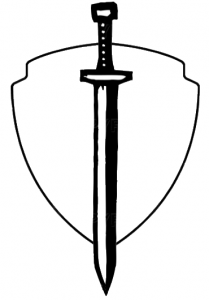
The crusader, Otego, is Lawful Good. He is also referred to as the Protector and the Liberator. His followers, which include Paladins, good Fighters and Monks, promote chivalry, order, and valor. His domains include Glory, Good, Law, Liberation, Metal, Protection and War. Otego’s favored weapon is the bastard sword.
Otegoist Churches
Otego’s followers can be proud and outspoken, sometimes evangelizing in attempt to convince more people in following him. They can also be found crusading, righting wrongs and injustice. Often they work to keep the peace, preventing the need for conflict.
- Church of the Divine Sword – During much of the Vaerendri Wars, there was one church dedicated to Otego: the Church of Sword and Shield. The Divine Sword was originally a sect within the church. However, the war did span 6 centuries, and it was a time of great conflict, so eventually there was a schism and the Divine Sword became its own church. Those of the Divine Sword actively crusade to right wrongs and spread the word of Otego. Often they can be found on the battlefield, serving on the front lines or as field medics.
Hierarchy: The head of the church is the Archbishop, who holds the title of Holy Polemarch of Daland. Below him are his advisers, the Order of Cardinals. A senior Cardinal heads each of the of the three lesser Orders of the church, which are considered roughly equal in power and influence. The Order of the Crusade, led by the Cardinal titled Lord Polemarch, are the church’s warriors and temple guards. Ranks in this Order are (from highest to lowest) Polemarch, Legate, and Praetor. The Cardinal titled the Abbot heads the Order of Friars. Members of this Order serve as missionaries and wandering priests, spreading the word of Otego. Ranks in this Order include Friar and Brother/Sister. The Order of Ministers, headed by the Priest-General, serve as what most would consider a priest, conducting services and the like. Ranks of this Line are Bishop, Priest, and Deacon. Seminarians or clergy not yet accepted into a Order of priesthood are called Adjutants.
- Church of Aegis – The Aegis was once another sect of the Church of Sword and Shield before the schism. Today, the Aegisians are peace keepers and bastions of law, sometimes serving as judges, sheriffs, or guard captains.
Hierarchy: The head of the church is the Archbishop, who holds the title of Holy Prefect of Wolfberg. Below him are his advisers, the Line of Cardinals. A senior Cardinal heads each of the of the three lesser Lines of the church, which are considered roughly equal in power and influence. The Line of Inquisitors, led by the Cardinal titled Lord Inquisitor, are the church’s warriors and temple guards. Ranks in this Line are (from highest to lowest) High Inquisitor, Inquisitor, and Prefect. The Cardinal titled the Abbot heads the Line of Friars. Members of this Line serve as missionaries and wandering priests, spreading the word of Otego. Ranks in this Line include Friar and Brother/Sister. The Line of Ministers, headed by the Archpriest, serve as what most would consider a priest, conducting services and the like. Ranks of this Line are Bishop, Priest, and Deacon. Seminarians or clergy not yet accepted into a Line of priesthood are called Acolytes.
- Order of the Exalted Soul – Monasteries of the Exalted Soul provide places of solitude for members of their order to meditate through martial arts and weapon drills, so they may defend those in need of protection. Monks of this order may choose one of the following variant fighting styles presented in Unearthed Arcana (p.52): Cobra Strike, Hand and Foot, Overwhelming Attack, or Sleeping Tiger. They also gain proficiency with the following weapons, which they can consider monk weapons when using a Flurry of Blows attack: Shortspear, Spear, Short Sword and Longsword.
Hierarchy: The Order is formally lead by the Circle of Abbots, but each temple or monastery is mostly autonomous. An Abbot is the leader of the temple, followed in ranks by Friars, then Brothers and Sisters. A person wishing to formally join a temple or monastery who has not yet proven his faith is called a Petitioner.
Rolahoi(Roll-ah-ho-ee) – Male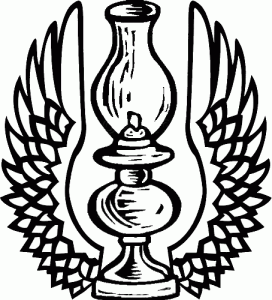
The god of roads and travel, Rolahoi, is Lawful Neutral. He is also known as the Wanderer, the Lucky, and the Seer of Truth. Many pay homage to him when preparing for journeys. His followers tend to be charismatic or have a forceful personality, and tend to be Bards, merchants and, at times, Rogues. He is associated with the Air, Celerity, Healing, Law, Luck, Mind, and Travel. His favored weapon is the spear.
Rolahoian Churches
Rolahoi is willing to lend a hand to all who trade or travel. Two groups exist, one focusing on the former, and the other the latter.
- Church of the Juridical Bond – The city of Swyn is the center of trade, with thousands of transactions happening every day. The Rolahoist priests of the Church of the Juridical Bond are sometimes asked to make sure deals go smoothly. They are excellent negotiators, so they are sometimes asked to oversee deals that don’t always involve trade. In recent years, the Juridical Bond has made deals with nations in order to facilitate easier trade: common coinage. The church operates mints in Farmington, Grenscross and Swynport, which they then circulate coins to banks. Several of the churches can also offer money-changing services (for a nominal fee) from regional currency to the church-sanctioned coin.
Hierarchy: The church is lead by the Council of the Covenant, consisting of Archbishops. The aside from the business of running the church, the Council is also responsible for maintaining temples and conducting services. Other ranks of the Council include Bishop and Priest. Cleargy from the Council of Arbiters are typically the ones to deal with negotiations. They are also responsible for the operation of the mints and distribution of coin. Ranks of this Council include High Arbiter and Arbiter. The smallest group of the church, the Peregrinate Council, fills missionary roles and is responsible for blessings of travel. Members of this Council are simply referred to as Pilgrims.
- Vaerendri Order – Solitary are those of the Vaerendri Order. They can be found as lone wanderers, tending to simple roadside temples, or as innkeepers assisting wayward travelers. Monks of the Vaerendri Order gain Knowledge (Geography) and Survival as class skills.
Hierarchy: The Order has no formal hierarchy. Clergy refer to each other as Brother or Sister and take on new members as apprentices.
Tedabe(Ted-ah-bay) – Male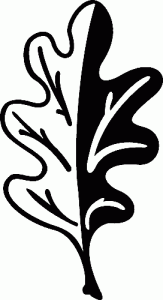
The god of nature, Tedabe, is Chaotic Neutral. He is sometimes known as the Master of Beasts or Ruler of Elements. His followers, which include Barbarians, Druids, and Rangers, promote harmony with nature. He is associated with the Air, Animal, Chaos, Earth, Fire, Plant, Sun, Water, Weather and Wood. His favored weapon is the longbow.
Tedabeist Churches
Those that follow in Tedabe’s footsteps tend to be as disorganized and free-spirited as the forces that he represents. Though groups of Druids may meet from time to time, there does not seem to be any formal organization to such meetings.
Hierarchy: Druids are a mysterious sort and apparently excellent at keeping secrets. If anyone has discovered their inner-workings, no one has told.
Alternate Forms of Religion
Not everyone reveres the Great Heroes of the Last Age. Those that choose to follow a different path tend to live on the fringes on society. Perhaps their beliefs are simply not understood by those around them, or they’re opposed to ‘normal’ societal constructs.
The Five Phases of Nature
Also known as the ‘old ways’ or the ‘old religion’ or even ‘the balance,’ the Five Phases represent more primal forces, drawing power from the planet itself. The docterine of the Five Phases describes both a generating cycle and an overcoming or restraining cycle of interactions between the phases.
- Generating
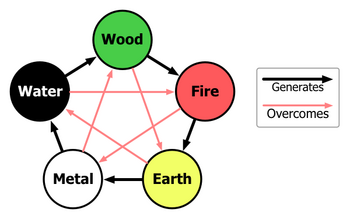
- wood feeds fire;
- fire creates earth (ash);
- earth bears metal;
- metal collects water and
- water nourishes wood.
- Overcoming
- wood parts earth;
- earth absorbs water;
- water quenches fire;
- fire melts metal and
- metal chops wood.
The elves of the K’Thirian Woods had never fully accepted the Great Heroes, and to this day they still revere the Five Phases. Aside from the K’Thirian, no other large groups of followers exist within the Three Kingdoms.
Miscellaneous Cults
Yet more esoteric than the ways of the Five Phases are the oft misunderstood and feared cults and their associated deities.
- The Silver Dragon – Little is known of the deity known simply as the Silver Dragon; its agenda is a complete mystery outside its associated cult, the Order of the Silver Dragon. The cult appears largely as a knightly order, assumed to be ‘good,’ but members will not concern themselves with ‘local’ affairs.
- The Master of the Tower – Those rare individuals of the Order of the Crescent Moon that stray outside the Shattered Tower speak in hushed tones about their Master. Again, as the Silver Dragon, the Master’s agenda is unknown (but don’t let one of the Master’s followers hear anyone compare him with the Silver Dragon!).
- Elder Ones – The feared foes of the Great Heroes, the Elder Ones supposedly caused the fall of the Old Empire and cast the world into darkness for hundreds of years. Though widely believed to be vanquished, they are stuff of legendary evil, still feared to this day. Some believe that the Seekers and the Watchers, cults believed to date back to the fall of the Empire, revere the Elder Ones.